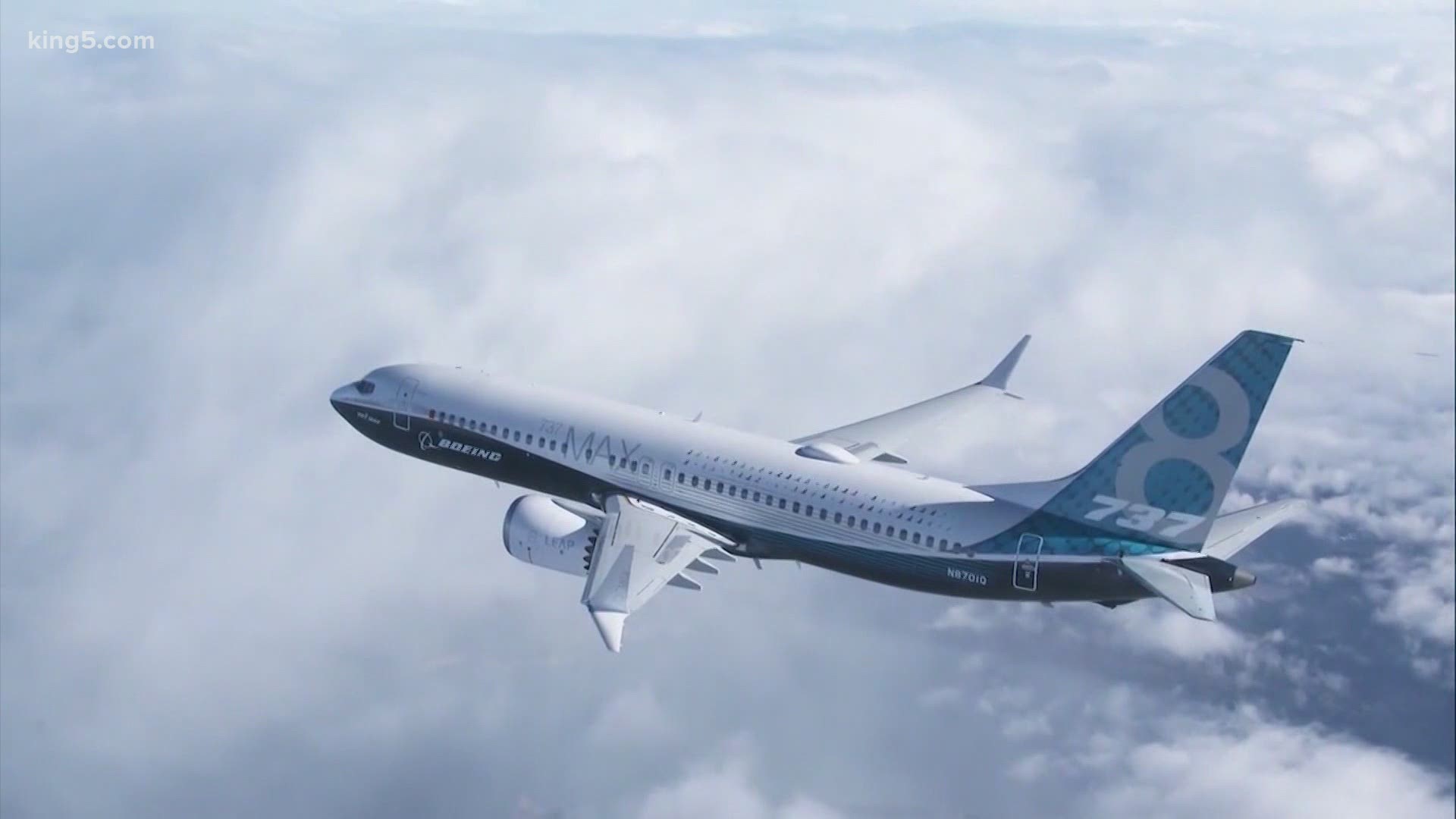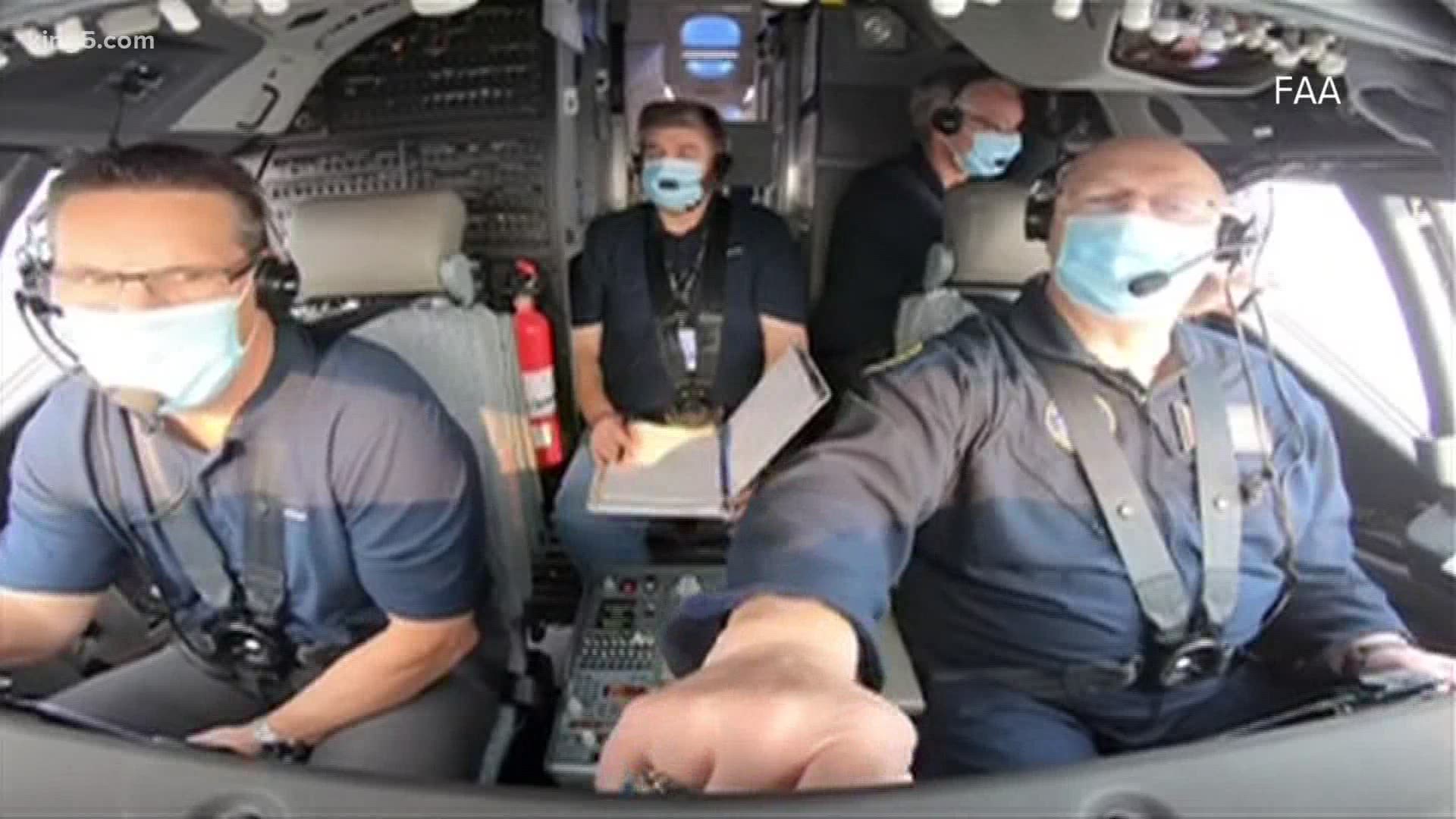The Federal Aviation Administration cleared Boeing’s 737 MAX for flight Wednesday, ending the 20-month grounding of the jet in the United States.
The nation’s air safety agency announced the move early Wednesday, saying it was done after a “comprehensive and methodical” 20-month review process.
The 737 MAX fleet was grounded worldwide in March 2019 after crashes in Indonesia and Ethiopia killed 346 people. Boeing has since been working to update software, computers, and pilot training for the MAX.
Federal Aviation Administration chief Stephen Dickson signed an order Wednesday rescinding the grounding. U.S. airlines will be able to fly the MAX once Boeing updates critical software and computers on each plane and pilots receive training in flight simulators.
American is the only U.S. airline to put the MAX back in its schedule so far, starting with one round trip daily between New York and Miami beginning Dec. 29.
The FAA says the order was made in cooperation with air safety regulators worldwide. “Those regulators have indicated that Boeing’s design changes, together with the changes to crew procedures and training enhancements, will give them the confidence to validate the aircraft as safe to fly in their respective countries and regions,” the FAA said in a statement.
The move follows exhaustive congressional hearings on the crashes that led to criticism of the FAA for lax oversight and Boeing for rushing to implement a new software system that put profits over safety and ultimately led to the firing of its CEO.
Investigators focused on anti-stall software that Boeing had devised to counter the plane’s tendency to tilt nose-up because of the size and placement of the engines. That software pushed the nose down repeatedly on both planes that crashed, overcoming the pilots’ struggles to regain control. In each case, a single faulty sensor triggered the nose-down pitch.
The FAA required Boeing to change the software so it doesn’t repeatedly point the nose of the plane down to counteract possible aerodynamic stalling. Boeing says the software also does not override the pilot’s controls like it did in the past. Boeing also must install new display systems for pilots and change the way wires are routed to a tail stabilizer bar.
Renton City Councilmember Randy Corman said, “A lot of our residents work for Boeing, a lot of them have been working really hard to get to this day, and a lot of our residents work for the FAA and they’ve been working really hard to get to this day, so there’s a lot of reason to celebrate, it’s very good news for us.”
Nearly 400 MAX jets were in service worldwide when they were grounded, and Boeing has built and stored about 450 more since then. All have to undergo maintenance and get some modifications before they can fly.
Pilots must also undergo simulator training, which was not required when the aircraft was introduced.
John Hansman, an aeronautics professor at MIT, said that people typically avoid airplanes for a few months after there are problems. But the MAX case is unusual, and were it not for the novel coronavirus, Hansman said he would feel safe flying on a MAX.
“This whole thing has had more scrutiny than any airplane in the world,” he said. “It’s probably the safest airplane to be on.”
Hansman said pilot training for qualified 737 pilots shouldn’t take long because Boeing has fixed software problems.
Some families of crash victims are speaking out against the return of the fleet.
These family members still vow never to set foot on a 737 MAX, urging major overhauls in how the engines are affixed to the airplane that could lead to stalling. Other loved ones say the plane should never fly again, what they call "Axe the MAX."
Michael Stumo lost his 24-year-old daughter Samya Rose Stumo aboard Ethiopian Flight 302.
"I think we’ve had an impact," Stumo said about his pressure on Congress and the FAA. "It’s not just been us, other international aviation safety regulators don’t trust FAA anymore."
Crash victim Samya Rose Stumo also has a well-known family member. Her grand uncle is consumer advocate Ralph Nader.
KING 5's Glenn Farley reached Nader by phone. He's been critical of the FAA's job of recertifying the MAX and is not alone in accusing the FAA of not being transparent about the data.
"They've allowed Boeing to regulate the FAA, instead of the reverse," Nader said. “When the stealth MCAS software literally took control of the plane away from the pilots, and after a number of ups and downs, drove it right into the ground and the family of Rose Stumo want to make sure that this never happens to anyone else. They’re fighting, the families are organized."
Brittany Riffel of Redding, California lost her husband and brother-in-law, also aboard Ethiopan Flight 302. She was 7 months pregnant at the time.
"We are speaking up and concerned because we don’t want anybody to go through what we have all gone through," Riffel said. "I really, truly hope the MAX 8 is safe. I would want nothing more for it to be safe in the air, and have no more lives at cost to the MAX 8. That’s what this is all about."



